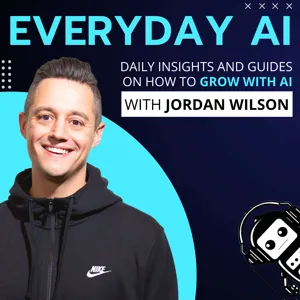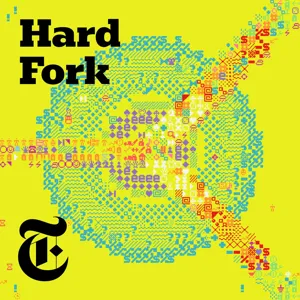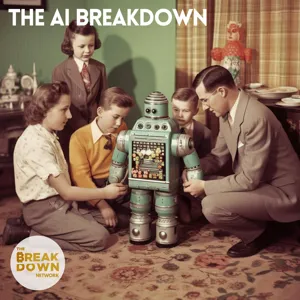Podcast Summary
GPU market crunch in AI industry: The GPU market is facing a crunch due to high demand from AI industry, with NVIDIA leading in high-end processors. Pandemic disruptions and complex manufacturing processes complicate capacity expansion. Demand for GPUs outpaces current capacity, with deliveries expected in small quantities in Sept and larger quantities from Dec-Apr.
The GPU market is currently experiencing a crunch due to the high demand for GPUs in the AI industry. The industry's structure is such that there are only a few major producers, NVIDIA and AMD, with NVIDIA being significantly ahead in high-end processors for large-scale training. The pandemic supply disruption has further complicated the situation, as expanding capacity is a lengthy and expensive process. The physical manufacturing process is complex and prone to yield issues. The demand for GPUs in the AI world has grown rapidly, creating a significant gap between the current capacity and what's needed. The industry is looking at deliveries in small quantities in September and larger quantities from December through April. Large cloud players, who are already the biggest consumers of GPUs, are exploring alternative suppliers to meet their near-term needs. It's unclear whether this is a long-term or short-term issue due to the lack of visibility into the price elasticity of these components. Overall, the GPU market's current state highlights the challenges of keeping up with the rapid pace of technological advancements in the AI industry.
GPU bottleneck driving new business models and solutions: The GPU bottleneck in the AI industry is leading to new monetization opportunities, a shift in the market towards GPU access or ownership, and a growing demand for more efficient solutions.
The current GPU bottleneck in the AI industry is leading to new monetization opportunities and a shift in the market. The demand for GPUs to train larger models and increase training times is outpacing the ability to scale the physical manufacturing process. This has resulted in the emergence of companies that provide GPU access or ownership in innovative ways, such as CoreWeave and FoundryML. Additionally, there's a potential for a resurgence of GPU usage in crypto mining, as it may be more economical to rent out GPUs for AI training and inference instead. Furthermore, startups that have built semiconductors specifically for AI training, like Cerebras, are experiencing strong demand due to the hardware supply crunch. These companies are signing large deals with countries and organizations desperate for solutions to overcome the bottleneck. When scaling is blocked on capacity, researchers are turning to efficiency as a solution. This area has not been a major focus in the past, but it's becoming increasingly important as the hardware supply crunch continues. Research into dynamically figuring out or routing to efficient models is undervalued and could offer significant benefits. In summary, the GPU bottleneck is leading to new business models, a shift in the use of existing GPU capacity, and a growing demand for more efficient solutions. These trends are likely to have cascading effects on the startup ecosystem and the wider AI industry.
AI growth hindered by compute supply crunch: The rapid growth of AI is being hindered by a compute supply crunch, with NVIDIA's chips being the most advanced option currently available. Researchers and organizations are exploring ways to use less compute for training models to mitigate this issue.
The current AI landscape is experiencing rapid growth, driven by advancements in technology and increasing demand. However, this growth is being hindered by a compute supply crunch, with NVIDIA's chips being the most advanced option currently available. This bottleneck could cause ongoing issues, especially as more enterprises begin to adopt AI technology in the coming years. To mitigate this, researchers and organizations are exploring ways to use less compute for training models, such as frugal GPT work and smarter data choices. Despite these challenges, the future of AI adoption is promising, with significant potential for innovation and growth. It's important to note that we're still in the early stages of this wave of AI adoption, and the hype cycle is likely to continue, driven by ongoing excitement and increasing adoption by both startups and incumbent enterprises.
Exploring the potential of AI agents: AI agents are advanced chatbots with planning mechanisms, enabling them to take autonomous actions and complete complex tasks. They're expected to range from consumer to specialized applications, potentially revolutionizing industries and growing into broad-based platforms.
We're still in the early stages of exploring the applications and constraints of AI, specifically in the realm of agents. These agents, which go beyond simple chatbots to include planning mechanisms that can take autonomous actions and complete more complex tasks, are expected to range from consumer applications to specialized ones that write executable code and use multiple tools. The overall paradigm shift towards agents is significant as it allows for more sophisticated tasks to be automated, and the potential for vertical applications to eventually grow into broad-based platforms. The excitement and interest in this area are driven by the potential for agents to revolutionize various industries, from analytics and enterprise automation to legal tasks, by handling multiple steps and returning results or reports to end-users. Despite the potential for vertical applications to dominate, there's also the possibility that broad-based platforms will emerge as the technology advances. Overall, the exploration and development of AI agents mark an important step forward in the collective understanding and practical application of this technology.
Start with a focused use case in agent development: Focusing on a specific use case early in agent development allows for a better understanding of the user base and delivering a high-quality product, rather than starting with a broad, abstract idea without a clear use case.
When developing technology, especially in the agent world, it's more effective to start with a targeted, focused use case rather than trying to do everything at once. The speaker mentions how Facebook started as a small platform for a few colleges and gradually expanded, while Google was a broad-based tool from the start. In the agent world, it's essential to define what the assistant does before building it, as starting with a narrow focus allows for a better understanding of the user base and the ability to deliver a high-quality product. The speaker also mentions the Y Combinator philosophy of delighting a small number of people rather than having a large number indifferent to the product. Starting with a broad, abstract idea without a clear use case can lead to a lack of depth and not delivering on the product's potential. The speaker emphasizes the importance of balancing infrastructure and research-driven approaches with a product engineering mindset to ensure that the technology is delivering value to its users.
Focusing on specific tasks in AI research leads to advancements: Focusing on achievable tasks in AI research, such as product development, research methods, or infrastructure tooling, can lead to significant progress in the field. Infrastructure tooling can enable others to develop AI agents quickly, leading to successful businesses or approaches.
Focusing on specific, achievable tasks in the field of AI research, whether it be through product development, research-driven methods, or infrastructure tooling, can lead to significant advancements. Happiness in this context can be defined as the absence of writing boilerplate code or the successful completion of a task. By focusing on these specific tasks, researchers and developers can make meaningful strides in the field. Moreover, there is a third approach to consider: infrastructure tooling. This approach involves building the infrastructure that enables others to develop AI agents quickly. This can lead to successful businesses or approaches, depending on the market liquidity of the product or the existence of an existing product area. Looking ahead to the future, there are expected to be four distinct markets in the tech industry in the coming years. One of these markets will be AI, which is expected to continue advancing in various ways and may look expensive at the time but will look cheap in hindsight. It is important for researchers and developers to understand the specific focus of their work and how it fits into the larger context of the tech industry.
Predicted turbulence in tech market for mid to late-stage private companies: A third of these companies will fail, a third will reach peak valuation, and a third will continue to grow. Market turbulence will lead to easier hiring, potential commercial real estate ramifications, and impact the venture capital community. Companies should try to disassociate from inflated valuations as market correction may take several years.
The tech market, specifically for mid to late-stage private companies outside of AI, is expected to experience significant turbulence in the coming years. About a third of these companies are predicted to go under, a third will reach their peak valuation, and a third will continue to grow. This carnage in the market will lead to easier hiring, potential ramifications for commercial real estate, and impact the venture capital community. Companies that raised significant valuations during this period should try to disassociate from them as the market correction may take several years to fully play out. Valuation is seen as ephemeral, and many tech companies in public markets have experienced down rounds in the last year and a half. Historically, it takes a decade for technology companies to recover from market downturns, but startups may not have that luxury. The full effects of this correction are expected to unfold in 2024 and 2025.
Burning cash without revenue concern for investors: Founders should manage costs and pivot or shut down unsuccessful businesses, focusing on the underlying business case and model
The burning of excessive cash without substantial revenue to show for it is a major concern for investors, even if a company is forced to reprice its stock in public markets. Founders should be mindful of their cost profile and adjust it accordingly to avoid wasting valuable time during their prime entrepreneurial years. This period, which is typically free of major complications, is the best time to take risks and start a company. However, it's crucial to remember that not all ventures will succeed. Therefore, founders must be willing to pivot or shut down a business that isn't working. In essence, the underlying business case and model are what truly matter, not just the valuation.





